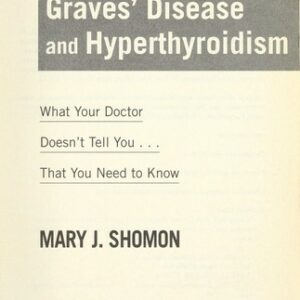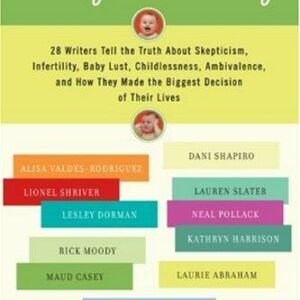Everyday Vitality
$18.00
| Title | Range | Discount |
|---|---|---|
| Trade Discount | 5 + | 25% |
- Description
- Additional information
Description
As seen on the TODAY Show, The New York Times, People Magazine, Mind Body Green, and more
“If you would like to live a more fulfilled life, Samantha Boardman has exactly what you need. Everyday Vitality is one part memoir, one part wisdom from years of experience as a psychiatrist, and one part cutting edge scientific evidence. Brilliant, warm, and best of all—an actionable guide to a life well-lived.”
—Angela Duckworth, New York Times bestselling author of Grit: The Power of Passion and Perseverance
Science-backed, research-driven, actionable strategies for countering stress and building your resilience
“A great deal of everyday wellbeing lies beyond what is happening inside a person’s head. Everyday opportunities and activities that foster growth and build positive resources are not ‘icing on the cake,’ but the active ingredients of everyday resilience.” —Samantha Boardman, Everyday Vitality
In Everyday Vitality, psychiatrist Dr. Samantha Boardman shows readers how to find strength within their stress and how to transform full days into more fulfilling days. Drawing from scientific research and her own clinical experience, she shares strategies for cultivating vitality—the positive feeling of aliveness and energy that lies at the core of well-being and at the heart of a good day.
You will discover how increased vitality boosts productivity, builds coping skills, and enhances your ability to manage negative emotions. Dr. Boardman demonstrates how to override counterproductive responses to the onslaught of daily hassles and to respond with flexibility and fortitude instead of fear and rumination. Rather than disengaging from the world while you “find yourself,” she shows you how to boost your vitality by living well within the world.
As Dr. Boardman explains, the three main wellsprings of vitality are: meaningfully connecting with others; engaging in experiences that challenge you; and contributing to something beyond yourself. These activities foster resilience by boosting emotional stamina and generating uplifts—the counterparts to daily irritations and annoyances. Whether it is having a good conversation, doing a favor for someone, going for a walk, or reading an interesting article and then calling a friend to talk about it, commonplace experiences and micromoments serve as the building blocks of everyday resilience. Everyday Vitality explains how to identify them in your life, develop them, and use them as a foundation on which to thrive.
Whether you are twenty or eighty, Everyday Vitality will give you the tools you need to get the most out of each day and to live your life to the fullest. “Boardman’s most successful argument is that society’s focus on self-care does more harm than good, as building community and finding supportive friends and family is crucial to well-being, while focusing too much on the self can increase rumination and, ultimately, depression. . . . By encouraging readers to ‘override the urge to do what’s easy but empty,’ Boardman’s helpful suggestions rise above the standard self-help fare.”
—Publishers Weekly
“If you would like to live a more fulfilled life, Samantha Boardman has exactly what you need. Everyday Vitality is one part memoir, one part wisdom from years of experience as a psychiatrist, and one part cutting edge scientific evidence. Brilliant, warm, and best of all—an actionable guide to a life well-lived.”
—Angela Duckworth, New York Times bestselling author of Grit: The Power of Passion and Perseverance
“An insightful, uplifting read about how to bring more liveliness into our lives. Whereas most psychiatrists focus on alleviating mental illness, Samantha Boardman cares deeply about promoting mental health too. She combines an impressive command of science with deep empathy for her patients. If you’re depressed, burned out, or languishing, this book is brimming with practical ideas—and even if you’re flourishing, it’s full of valuable reminders for sustaining energy and well-being.”
—Adam Grant, #1 New York Times bestselling author of Think Again
“As its title promises, Samantha Boardman’s Everyday Vitality is an essential guide to building and maintaining a fundamental quality that promotes resilience and joy in daily life. Drawing upon her own clinical experience and a wealth of research, she demonstrates that the key to finding fulfillment is not only by focusing on ourselves, but by engaging with others and with the world—which now more than ever is a timely and welcome prescription.”
—Arianna Huffington, Founder & CEO, Thrive Global
“In this gloriously insightful, intimate, eminently readable book, Samantha Boardman has captured and extended the dynamics of positive psychology, teaching us how to rebuild our lives and invest them with joy. Mixing rigorous scholarship with sophisticated common sense and an underlying generosity of spirit, she writes in readable, accessible, captivating terms about how to experience the world more fully and richly. Her flashes of profound insight, her mastery of the complexities of her topic, her gentle sense of humor, and her cheerful celebration of our capacity to achieve positive change all make this a must-read for anyone who seeks meaning and fulfillment. This is a brilliant and necessary volume, written with grace, style, and, most of all, a deeply moving compassion.”
—Andrew Solomon, author of National Book Critics Circle Award winner Far from the Tree and National Book Award winner The Noonday Demon
“In this insightful book with wise and often counterintuitive advice for achieving vitality and combatting stress, Boardman turns the idea of ‘self-help’ on its head, reminding us the power of vitality comes from our orientation to worlds larger than our own. This is the book we all need!”
—Sarah Elizabeth Lewis, Associate Professor, Harvard UniversitySamantha Boardman is a clinical instructor in psychiatry and an attending psychiatrist at Weill Cornell Medical College. She received a BA from Harvard University, an MD from Weill Cornell Graduate School of Medical Sciences, and an MA in applied positive psychology from the University of Pennsylvania. She is the founder of positiveprescription.com, a website devoted to making tweaks and changes that are life-enhancing and resilience-building by combining conventional medicine and psychiatry with positive psychology. She has been featured on TODAY, is a regular contributor to HuffPost and Psychology Today, and has written for New York Magazine, Refinery 29, Goop, The Wall Street Journal, and Marie Claire.
Chapter 1
The Pebbles in Your Shoe
Supposedly, the worst time to get sick is in July, when brand-new interns flood the teaching hospitals. Although these interns have gained hands-on experience in medical school, dealing with patients on wards is a different proposition. These young doctors are expected to make decisions-big and small-all on their own. They decide which antibiotic to prescribe, whether or not to order a CT scan, how to stabilize a decompensating patient, and how to speak to an anxious family.
When I graduated from medical school in late June 2000, the immediate upgrade to “Samantha Boardman, MD” boosted my confidence. After all those years wearing a short white student coat, I was finally allowed to put on a long one and walk proudly down the hospital hall.
My honeymoon as the newly minted Dr. Boardman was short-lived. As soon as I arrived for the first night shift, a nurse paged me. A patient had died, and a doctor was needed to fill out a death certificate, which I’d only done once before. It was also my responsibility to notify family members and explain that they could request an autopsy if they wished. Of course, no one wants an autopsy, so I’d be careful to choose my words.
My beeper went off again. A different nurse informed me that I had to draw blood cultures from a leukemia patient who had a fever of 103 degrees.
“I’ll be there right away,” I said.
When my beeper alerted me again, it was a third nurse, who was concerned about a patient with a rapid heart rate. By now my own heart rate was rising, too, and the list of patients in need of my attention only continued to grow. My initial excitement at having become “Dr. Boardman” evaporated. Imposter syndrome kicked in. I felt like a fraud, playing “dress up” in my white coat. My face turned red, and tears pricked my eyes. I swallowed a big gulp of lukewarm black coffee and took a bite of a doughnut I had shoved into my pocket earlier that day.
If a patient had been in a cardiac crisis, I would have known exactly what to do. I would have swung into action: check the patient’s pulse and breathing. If the patient was in distress, I would call a CODE to alert the Rapid Response Team that a patient was in cardiac arrest and then begin chest compressions. I was well trained in the handling of major emergencies, but this was an unrelenting barrage of smaller challenges.
“It isn’t the mountains ahead to climb that wear you out, it’s the little pebble in your shoe,” Muhammed Ali once said.
I could have handled a boulder, but the avalanche of tiny pebbles was overwhelming.
I hear echoes of my first night working as an intern in the stories of many patients. They tell me that they are emotionally exhausted and feel pulled in a thousand different directions at once. Although their schedules are jam-packed, they long for a sense of genuine fulfillment. When I ask them to describe their state of mind in a single word, they reply with “drained,” “depleted,” and even “dead.”
“It’s not that I am drowning,” a patient in her early forties explained to me. “I am keeping my head above water, but the waves are big and I am getting constantly getting splashed in the face.”
Another patient summed it up this way: “Every day feels like a Sunday night-full of dread and emptiness.” When I asked him to describe his mood in one word, he thought a moment and replied, “lackluster.”
Another patient quoted a line from a Robert Lowell poem to convey her exasperation with the demands of daily life: “How will the heart endure?”
The Pebbles Can Pummel You
Determining whether a person is clinically depressed is not an arbitrary decision. Psychiatrists follow strict guidelines specified by the DSM (Diagnostic and Statistical Manual of Mental Disorders) and look for at least five of the following nine symptoms lasting at least two weeks:
1. Feels depressed most of the day, nearly every day, as indicated by subjective report (e.g., feels sad, empty, hopeless) or observation made by others (e.g., appears tearful)
2. Feels markedly diminished levels of interest or pleasure when engaging in all, or almost all, activities most of the day,
nearly every day (as indicated by subjective account or observation)
3. Significant weight loss when not dieting, or weight gain or decrease, or increase in appetite
4. Sleep disturbance
5. Psychomotor agitation or retardation nearly every day (observable by others, not merely subjective feelings of restlessness or being slowed down)
6. Fatigue or loss of energy
7. Diminished ability to think or concentrate, or indecisiveness
8. Feelings of worthlessness or excessive or inappropriate guilt nearly every day
9. Recurrent thoughts of death (not just fear of dying), recurrent suicidal ideation without a specific plan, or a suicide attempt or a specific plan for committing suicide
I include these criteria not only because I want readers to know that depression can manifest in many ways, but also to underscore the importance of seeking professional help if they apply to you or a loved one. Over the years I have diagnosed, hospitalized, and treated many patients with the full range of the symptoms described above. But there are also many who qualify for an “almost diagnosis”-not mentally ill by clinical standards but lacking positive mental health.
When I first opened my private practice, most of the new patients I took on were at an inflection point. They sought help to assess a life-changing decision or to understand a relationship, or they were in the midst of a significant transition, often following a loss. The chronic issues in their daily lives did not take center stage. Today more and more patients come to see me because of the ups and downs in their daily lives. They are feeling worn out and worn down by the daily grind.
Women seem to feel it the most. Almost half of the women surveyed said they frequently experience daily stress, and more than 40 percent said they feel as if they don’t have enough time. Their lives are nonstop, with a to-do list that seems bottomless. Often a lack of vitality only amplifies their stress. Patients often just give up and sigh, “I guess that’s just life.”
The hassles of day-to-day living-the annoying, anxiety-provoking, and frustrating experiences that are embedded into everyday life-are a significant source of stress. Seemingly minor occurrences-an argument with a child or partner, an unexpected work deadline, arriving late for an appointment, missing a train, or dealing with a malfunctioning computer-all contribute. One study’s results indicated that watching the news and losing your cell phone are among the top ten daily events that stress people out. Even a long line at your local coffee shop or not having hot water for your morning shower can be enough to put you in a terrible mood.
We know it’s absurd to allow something minor to ruin a minute, let alone a day. We try to dismiss these daily irritations as irrelevant or as the “first-world problems” they are. We tell ourselves that they don’t matter in the long run. But they do.
Many assume that major life events like divorce, the death of a spouse, and the loss of a job are the most virulent causes of stress, but a University of California, Berkeley, study confirmed that so-called microstressors are the ones we need to watch out for: “[T]hese kinds of stressors have been taken for granted and considered to be less important than more dramatic stressors. Clinical and research data indicate that these ‘micro-stressors’ acting cumulatively, and in the relative absence of compensatory positive experience, can be potent sources of stress.”
The impact of challenges that occur during everyday living on both a person’s physical and mental health cannot be underestimated and are, in fact, better predictors of health than major life events.
Researcher Richard Lazarus was one of the first to recognize how relatively minor incidences could have so strong an impact. He believed that the overall level of demands on a person and the perception of resources available to meet those demands were what determined if a potential hassle became an actual one. So if an individual is already feeling taxed, an event that might be typically ignored or overlooked-a leaky pen, a missed subway, spilled coffee-takes on a far more negative tone. If the individual is feeling strong, such annoyances may be easily shrugged off or simply pass unnoticed.
During another study, people were asked to record their daily microstressors in a diary, and the results concluded, “Minor daily stresses affect well-being, not only by having separate, immediate, and direct effects on emotional and physical functioning, but also by piling up over a series of days to create persistent irritations, frustrations, and overloads that may result in more serious stress reactions such as anxiety and depression.”
Even routine and relatively predictable anxiety-inducing situations can impact health. Watching a stressful soccer match, for example, can more than double the risk of having a heart attack. Our immune system is also vulnerable to stress. Students who were about to take a medical board exam were shown to have a less robust response to the hepatitis vaccine than students who received the shot when they were relaxing during the holidays. People who report a great deal of daily stress tend to be more susceptible to the common cold. When healthy volunteers were exposed to nasal droplets containing the flu virus, those who reported ongoing daily stress were more likely to get sick and display worse symptoms. (To quantify mucus production, the researchers weighed the snot in each tissue. I always felt sorry for the poor graduate students who performed this decidedly unglamorous task in the name of science.)
No one needs a study to prove that stress makes it harder to get along with family members and friends. When emotionally exhausted, we feel more irritable and argumentative. We participate less in volunteer organizations and feel less engaged at work. General well-being beyond social situations takes a hit. People sleep less, eat more, exercise less, have less sex, and watch TV or play video games more than usual. A gravitational pull toward self-interest and other unproductive patterns of thought and behavior kick in. These responses aren’t good for the individual nor for those around them.
A Demanding Boss, a Sick Cat
Bella was referred to me by an internist after she burst into tears at his office. She was twenty-nine years old and worked at a clothing company in Manhattan. She lived with her boyfriend, Joe, but they didn’t spend much time together. Between their work and travel schedules, she said they were “like passing ships in the night.” When they were together, they bickered over household matters. Joe had recently forgotten to pick up cat food on his way home, and a nasty argument ensued. She interpreted his forgetfulness as a sign he was no longer invested in their relationship.
When she came to see me her chief complaint was, “I’m just frazzled.” She mostly enjoyed her job and was productive, but she always felt pressed for time. She was eager to find herself, figure out who she was. “All I want,” she told me, “is to be happy.” But every day was nonstop aggravation. Her commute was a nightmare, because she had moved out to Long Island for the improved “quality of life” and now laughed at the irony. Long work days, a demanding boss, and a sick cat topped a list of obligations and responsibilities. She felt isolated, and her now-stale relationship with Joe made her feel even more alone.
Bella prided herself on not needing much sleep. On weeknights she would watch MSNBC until one o’clock in the morning. During weekends she would crash, staying in bed for most of the day and watching movies. She said she had no time for exercise or to cook. When she was at work, she mostly ate from the vending machine or ordered a cheeseburger from the greasy spoon down the street. She rarely saw her friends and had even canceled attending her college roommate’s thirtieth birthday, explaining, “I just didn’t have the energy.”
One day, she discovered that her driver’s license had expired, and she burst into tears at the internist’s office. “It had been a rough day to begin with,” she explained. “I was late for work. The cat needed to go to the vet . . . and then the license.” She was embarrassed at having cried over something “so dumb and minor.” She shrugged. “I guess it was just the straw that broke the camel’s back.”
Bella did not have a history of prior episodes of depression. She was not facing a major crisis. She hadn’t been flattened by a big boulder, but the relentless barrage of pebbles had become too much.
When feeling threatened or overwhelmed, we have a tendency to pull away from others and draw into ourselves. Self-focused thinking and behavior served our ancestors well when their survival depended on outrunning a saber-toothed tiger, but these reactions are not necessarily helpful for modern life. Ironically, how people respond to daily stress is often the opposite of what would give them strength. Choices like canceling plans with friends, eating comfort food, staying up late watching television, and skipping the gym offer temporary relief but further deplete vitality.
The key to finding wisdom and strength is not to step away from it all but to learn how to stand firm in the face of it all. For years I have been studying people who overcome daily stress by looking outside of themselves for support, advice, and inspiration. They achieve relief in a variety of ways:
They override the inclination toward self-defeating action and replace it with an “other-orientation” or “outer orientation,” which enables them to consider the thoughts, needs, and experiences of others. They become less defensive about their own choices and more likely to accept and implement helpful advice.
They don’t shy away from discomfort.
They make plans while remaining flexible.
When feeling vulnerable, they don’t go it alone but reach out.
They ask questions and keep an open mind.
They know that their actions affect how they feel.
They know that their participation is as important as their mindset.
They work hard at personal relationships, at adding value, and at staying engaged.
They build a scaffolding of protection and support that fortifies and revitalizes them on an ongoing basis.
Telling Bella, or any patient, what changes to make or how they should conduct their lives undermines their autonomy and rarely leads to the desired result. To paraphrase psychologist Albert Ellis, “shoulding” on ourselves or others is never helpful. Given that it would be impossible to stop the onslaught of all the pebbles in her life, the key to guiding Bella was to help her find the strength and stamina to manage them.
US
Additional information
| Weight | 8.8 oz |
|---|---|
| Dimensions | 0.8000 × 5.4700 × 8.3600 in |
| Imprint | |
| ISBN-13 | |
| Author | |
| Audience | |
| BISAC | |
| Subjects | science books, stress workbook, healing trauma, SCI090000, happiness books, anxiety workbook, motivational books for men, self development books, health and wellness, motivational gifts, self help books for men, self help books for women, positive psychology, motivational books for women, motivational books, gratitude, mental health, self care, post traumatic stress disorder, psychology books, Brain, gifts for women, self help books, Emotions, motivation, happiness, PSY013000, anxiety, stress, self help, wellness, psychology |
| Format |











